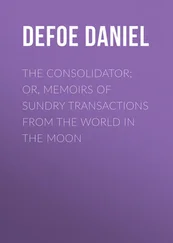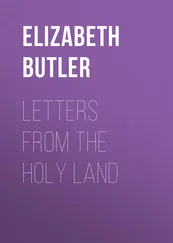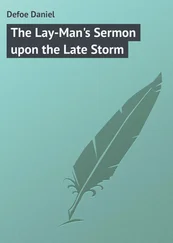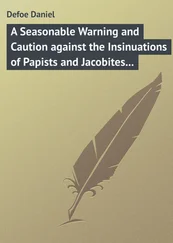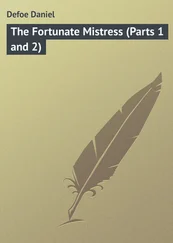Daniel Defoe - From London to Land's End and Two Letters from the Journey through England by a Gentleman
Здесь есть возможность читать онлайн «Daniel Defoe - From London to Land's End and Two Letters from the Journey through England by a Gentleman» — ознакомительный отрывок электронной книги совершенно бесплатно, а после прочтения отрывка купить полную версию. В некоторых случаях можно слушать аудио, скачать через торрент в формате fb2 и присутствует краткое содержание. Издательство: Иностранный паблик, Жанр: foreign_antique, foreign_prose, на английском языке. Описание произведения, (предисловие) а так же отзывы посетителей доступны на портале библиотеки ЛибКат.
- Название:From London to Land's End and Two Letters from the Journey through England by a Gentleman
- Автор:
- Издательство:Иностранный паблик
- Жанр:
- Год:неизвестен
- ISBN:нет данных
- Рейтинг книги:3 / 5. Голосов: 1
-
Избранное:Добавить в избранное
- Отзывы:
-
Ваша оценка:
- 60
- 1
- 2
- 3
- 4
- 5
From London to Land's End and Two Letters from the Journey through England by a Gentleman: краткое содержание, описание и аннотация
Предлагаем к чтению аннотацию, описание, краткое содержание или предисловие (зависит от того, что написал сам автор книги «From London to Land's End and Two Letters from the Journey through England by a Gentleman»). Если вы не нашли необходимую информацию о книге — напишите в комментариях, мы постараемся отыскать её.
From London to Land's End and Two Letters from the Journey through England by a Gentleman — читать онлайн ознакомительный отрывок
Ниже представлен текст книги, разбитый по страницам. Система сохранения места последней прочитанной страницы, позволяет с удобством читать онлайн бесплатно книгу «From London to Land's End and Two Letters from the Journey through England by a Gentleman», без необходимости каждый раз заново искать на чём Вы остановились. Поставьте закладку, и сможете в любой момент перейти на страницу, на которой закончили чтение.
Интервал:
Закладка:
This church, and the schools also are accurately described by several writers, especially by the “Monasticon,” where their antiquity and original is fully set forth. The outside of the church is as plain and coarse as if the founders had abhorred ornaments, or that William of Wickham had been a Quaker, or at least a Quietist. There is neither statue, nor a niche for a statue, to be seen on all the outside; no carved work, no spires, towers, pinnacles, balustrades, or anything; but mere walls, buttresses, windows, and coigns necessary to the support and order of the building. It has no steeple, but a short tower covered flat, as if the top of it had fallen down, and it had been covered in haste to keep the rain out till they had time to build it up again.
But the inside of the church has many very good things in it, and worth observation; it was for some ages the burying-place of the English Saxon kings, whose reliques , at the repair of the church, were collected by Bishop Fox, and being put together into large wooden chests lined with lead were again interred at the foot of the great wall in the choir, three on one side, and three on the other, with an account whose bones are in each chest. Whether the division of the reliques might be depended upon, has been doubted, but is not thought material, so that we do but believe they are all there.
The choir of the church appears very magnificent; the roof is very high, and the Gothic work in the arched part is very fine, though very old; the painting in the windows is admirably good, and easy to be distinguished by those that understand those things: the steps ascending to the choir make a very fine show, having the statues of King James and his son King Charles, in copper, finely cast; the first on the right hand, and the other on the left, as you go up to the choir.
The choir is said to be the longest in England; and as the number of prebendaries, canons, &c., are many, it required such a length. The ornaments of the choir are the effects of the bounty of several bishops. The fine altar (the noblest in England by much) was done by Bishop Morley; the roof and the coat-of-arms of the Saxon and Norman kings were done by Bishop Fox; and the fine throne for the bishop in the choir was given by Bishop Mew in his lifetime; and it was well it was for if he had ordered it by will, there is reason to believe it had never been done – that reverend prelate, notwithstanding he enjoyed so rich a bishopric, scarce leaving money enough behind him to pay for his coffin.
There are a great many persons of rank buried in this church, besides the Saxon kings mentioned above, and besides several of the most eminent bishops of the See. Just under the altar lies a son of William the Conqueror, without any monument; and behind the altar, under a very fine and venerable monument, lies the famous Lord Treasurer Weston, late Earl of Portland, Lord High Treasurer of England under King Charles I. His effigy is in copper armour at full-length, with his head raised on three cushions of the same, and is a very magnificent work. There is also a very fine monument of Cardinal Beaufort in his cardinal’s robes and hat.
The monument of Sir John Cloberry is extraordinary, but more because it puts strangers upon inquiring into his story than for anything wonderful in the figure, it being cut in a modern dress (the habit gentlemen wore in those times, which, being now so much out of fashion, appears mean enough). But this gentleman’s story is particular, being the person solely entrusted with the secret of the restoration of King Charles II., as the messenger that passed between General Monk on one hand, and Mr. Montague and others entrusted by King Charles II. on the other hand; which he managed so faithfully as to effect that memorable event, to which England owes the felicity of all her happy days since that time; by which faithful service Sir John Cloberry, then a private musketeer only, raised himself to the honour of a knight, with the reward of a good estate from the bounty of the king.
Everybody that goes into this church, and reads what is to be read there, will be told that the body of the church was built by the famous William of Wickham; whose monument, intimating his fame, lies in the middle of that part which was built at his expense.
He was a courtier before a bishop; and, though he had no great share of learning, he was a great promoter of it, and a lover of learned men. His natural genius was much beyond his acquired parts, and his skill in politics beyond his ecclesiastic knowledge. He is said to have put his master, King Edward III., to whom he was Secretary of State, upon the two great projects which made his reign so glorious, viz.: – First, upon setting up his claim to the crown of France, and pushing that claim by force of arms, which brought on the war with France, in which that prince was three times victorious in battle. (2) Upon setting up, or instituting the Order of the Garter; in which he (being before that made Bishop of Winchester) obtained the honour for the Bishops of Winchester of being always prelates of the Order, as an appendix to the bishopric; and he himself was the first prelate of the Order, and the ensigns of that honour are joined with his episcopal ornaments in the robing of his effigy on the monument above.
To the honour of this bishop, there are other foundations of his, as much to his fame as that of this church, of which I shall speak in their order; but particularly the college in this city, which is a noble foundation indeed. The building consists of two large courts, in which are the lodgings for the masters and scholars, and in the centre a very noble chapel; beyond that, in the second court, are the schools, with a large cloister beyond them, and some enclosures laid open for the diversion of the scholars. There also is a great hall, where the scholars dine. The funds for the support of this college are very considerable; the masters live in a very good figure, and their maintenance is sufficient to support it. They have all separate dwellings in the house, and all possible conveniences appointed them.
The scholars have exhibitions at a certain time of continuance here, if they please to study in the new college at Oxford, built by the same noble benefactor, of which I shall speak in its order.
The clergy here live at large, and very handsomely, in the Close belonging to the cathedral; where, besides the bishop’s palace mentioned above, are very good houses, and very handsomely built, for the prebendaries, canons, and other dignitaries of this church. The Deanery is a very pleasant dwelling, the gardens very large, and the river running through them; but the floods in winter sometimes incommode the gardens very much.
This school has fully answered the end of the founder, who, though he was no great scholar, resolved to erect a house for the making the ages to come more learned than those that went before; and it has, I say, fully answered the end, for many learned and great men have been raised here, some of whom we shall have occasion to mention as we go on.
Among the many private inscriptions in this church, we found one made by Dr. Over, once an eminent physician in this city, on a mother and child, who, being his patients, died together and were buried in the same grave, and which intimate that one died of a fever, and the other of a dropsy:
“Surrepuit natum Febris, matrem abstulit Hydrops,
Igne Prior Fatis, Altera cepit Aqua.”
As the city itself stands in a vale on the bank, and at the conjunction of two small rivers, so the country rising every way, but just as the course of the water keeps the valley open, you must necessarily, as you go out of the gates, go uphill every wry; but when once ascended, you come to the most charming plains and most pleasant country of that kind in England; which continues with very small intersections of rivers and valleys for above fifty miles, as shall appear in the sequel of this journey.
Читать дальшеИнтервал:
Закладка:
Похожие книги на «From London to Land's End and Two Letters from the Journey through England by a Gentleman»
Представляем Вашему вниманию похожие книги на «From London to Land's End and Two Letters from the Journey through England by a Gentleman» списком для выбора. Мы отобрали схожую по названию и смыслу литературу в надежде предоставить читателям больше вариантов отыскать новые, интересные, ещё непрочитанные произведения.
Обсуждение, отзывы о книге «From London to Land's End and Two Letters from the Journey through England by a Gentleman» и просто собственные мнения читателей. Оставьте ваши комментарии, напишите, что Вы думаете о произведении, его смысле или главных героях. Укажите что конкретно понравилось, а что нет, и почему Вы так считаете.




